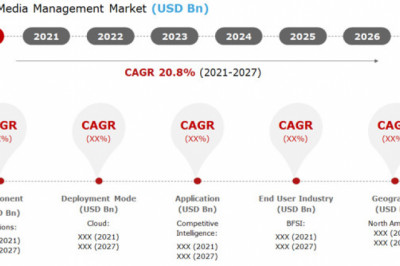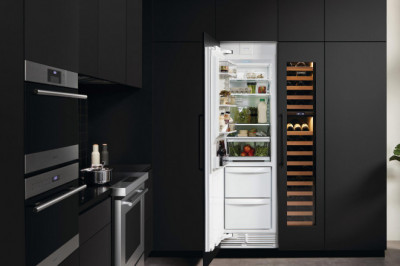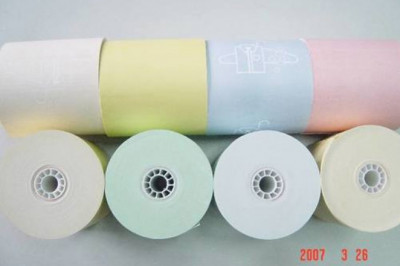views

“Remote work is working.”
So declared Erik Bradley, the Chief Engagement Strategist at ETR (Enterprise Technology Research), following a survey of 1,200 CIOs from around the world.
This discovery comes as no surprise to business leaders like Jason Fried, CEO of Basecamp and author of REMOTE: Office Not Required, who has been running a highly successful remote company for 20+ years.
But for business leaders in the manufacturing industry, forced to adapt to remote working scenarios overnight due to the pandemic, this has been somewhat of a revelation.
At KBMax, we’ve witnessed first-hand how those manufacturers that implemented robust CPQ software solutions pre-Covid have managed to weather the pandemic and the shift in working habits. Now their competitors are scrambling to implement their own CPQ solutions to maintain surprisingly successful remote and hybrid work models long-term.
So why is CPQ software so effective for remote work? Read on to find out.
Why Manufacturers Want to Stay Remote Post-Pandemic
Not all manufacturing jobs can be carried out remotely. Using specialized machinery and carrying out deliveries means being hands-on. But plenty of sales, support, and engineering roles can be. A good rule of thumb: jobs that require being tethered to a computer can be carried out from home.
So why do manufacturers want to keep remote and hybrid work models in place as the pandemic gradually eases?
Remote work is good for employees. They can:
Save time and money by ditching the commute (average daily commute time is an insane 54.2 minutes).
Experience greater autonomy, fewer interruptions, and less stress.
Customize their office however they like. They can play metal, work with their pet rat on their shoulder – whatever it takes to be productive.
Be location independent – travel the world all year round.
Be free of office politics bullsh*t.
Enjoy flexible working hours (spend more time with family and friends).
Remote work is good for employers. They can:
Improve inclusivity – access a global pool of talent, including disabled people who can’t navigate a traditional office setup.
Save money on office space, parking space, heating, lighting, cleaning, toilet paper(!) – up to $11,000 per year per remote worker.
Benefit from improved employee performance – remote workers are 35-40% more productive.
Extend opening hours from 9-5 to 24-7.
Experience lower absenteeism and higher employee retention (because employees want to work from home).
Remote work is also good for the planet. The environmental impact is huge. Before the pandemic, 3.9 million American employees worked from home at least half the time. This equated to 600,000 fewer cars on the roads.
By 2025, the number of Americans working from home is forecast to reach 36.2 million (22% of the workforce.) This equates to 5.6 million fewer cars on the roads or a reduction in greenhouse gas emissions of 27.8 million.
What are CPQ Software Solutions?
CPQ (configure, price, quote) software solutions automate and streamline several vital processes in manufacturing complex engineer-to-order products. These processes include – but are not limited to – configuration, pricing, and quoting, as explored below.
The best CPQ solutions are SaaS – software as a service. They live in the cloud, and employees can access them wherever they are, through any device. Their permissions determine their level of access, but it’s possible to have complete visibility over every stage from sales through support, engineering, production, delivery, and beyond.
A simple CPQ solution, like Salesforce CPQ, provides the following functionality:
Configuration
Sales reps can use CPQ software to configure complex products automatically. No longer do they have to pick part numbers from a neverending catalog – product rules built into the solution eliminate mistakes and ensure that reps make the right configuration decisions for each customer.
Pricing
The CPQ software calculates prices for each configurable product.
Quoting
The CPQ uses the configuration and pricing data to automatically generate a quote and send it to the customer, thus saving reps valuable time formatting and number-crunching in Excel.
How does KBMax differ from more traditional CPQ software solutions?
A powerful CPQ solution like KBMax performs at a higher level than traditional CPQ software. It’s designed for use by manufacturers of the most complex, configurable products.
In addition to standard CPQ functionality, KBMax provides additional features that automate and optimize manufacturers’ engineer-to-order processes from end to end. These include, notably, 3D visual configuration, embedding, and CAD and design automation.
With KBMax, the CPQ process looks like this:
Visual product configuration
Sales reps – and end customers themselves, if you integrate KBMax within your B2B eCommerce platform – can configure products in 3D using a visual product configurator. They can point, click, drag, and drop to change parts, features, colors, and dimensions and see precisely how their finished product will look before it rolls off the production line.
Dynamic pricing
As users configure products visually, prices are calculated automatically and updated on-screen in real-time.
While most CPQ solutions rely on cost-plus pricing, KBMax focuses on value-based pricing strategies. KBMax can take things like customer history, inventory levels, demand, and competitors’ prices into account.
Quote generation
Quotes, estimates, proposals, terms and conditions, marketing collateral, and any other document a sales rep needs can be generated with a click.
CAD and design automation
KBMax automatically generates CAD drawings based on the data captured during the product configuration stage. Our solution integrates with all CAD software, including Solidworks and Autodesk Autocad.
This CAD and design automation functionality saves engineers a huge amount of valuable time. It also eliminates hand-off communication fails and streamlines collaboration between sales, engineering, and the shop floor.
Manufacturing Automation
In addition to CAD drawings, KBMax can generate CNC cut sheets, assembly guidance, and BOMs to kickstart production. If a worker on the shop floor needs advice on which size timber to use and which workstation to go to, KBMax can be programmed to provide that information.
How CPQ Software Solutions Support an Increasingly Distributed Remote Workforce
Teams can access cloud-based technology any time, anywhere.
The best CPQ software solutions live in the cloud. They’re accessible at all times to employees on different continents who need access to the same systems, files, and procedures. Without proper SaaS CPQ software, remote workers can feel cut adrift, and managers can find it hard to assess performance. Not so with KBMax.
CPQ provides a single source of truth accessible to every remote employee.
The fabled single source of truth ensures that everyone in an organization can base their business decisions on the same data pool. A CPQ software solution that integrates with your CRM, ERP, CAD, B2B eCommerce, and other back-office systems can be that “truth,” promoting company-wide consistency and collaboration, regardless of location.
Visual CPQ is “built” for B2B eCommerce and self-serve scenarios.
73% of B2B buyers are Millennials, who prefer buying online. Combine this demographic shift with a pandemic that has fast-forwarded digital adoption by a decade, and it’s no surprise that B2B eCommerce growth has skyrocketed in recent years.
Visual CPQ solutions like KBMax have been designed for the B2B eCommerce revolution. Manufacturers can embed their visual product configurator into their website, empowering buyers to configure and purchase products themselves without the need for in-person sales or engineering involvement.
Sales reps can interact with buyers remotely.
Companies unable to rely solely on B2B eCommerce are interacting with buyers remotely. Visual CPQ makes these interactions more productive and compelling.
Rather than talking in hypotheticals, sales reps can “show” buyers precisely how their finished products will look. They can share screens to guide them through the configuration process, enhancing clarity, buying confidence, and decision-making.
You can take your showroom to the buyer with augmented and virtual reality.
The best visual product configurators have AR and VR capabilities built in. These technologies can bring products to life for buyers, wherever they’re located. They provide fully immersive buying experiences that are so captivating they “sell” your products more effectively than sales reps.
With AR, buyers can position computer-generated product images into real-world settings captured through the lens of a mobile device. With VR, manufacturers can create simulated realities where buyers interact with products inside a virtual showroom.
Tricky handoffs can be streamlined and automated.
The manual transfer of data from customers to sales reps, sales reps to engineers, and engineers to the shop floor is fraught with miscommunication. If you can’t get the right people in a room together, the potential for miscommunication is magnified.
CPQ software solutions gather all relevant customer data digitally. They validate it up-front and then distribute it automatically to each team. There’s no need for confusing back-and-forth. Product and pricing rules ensure that every configuration is profitable and viable.












